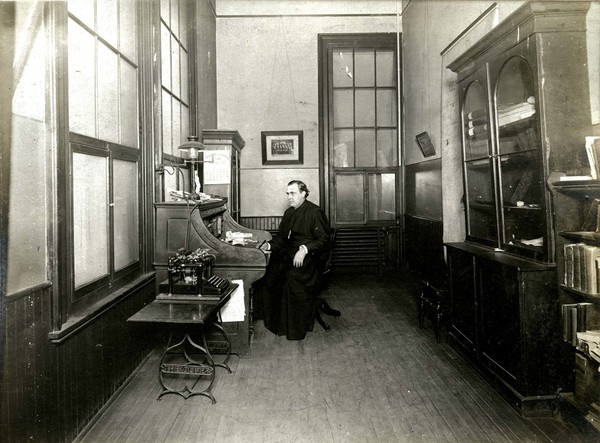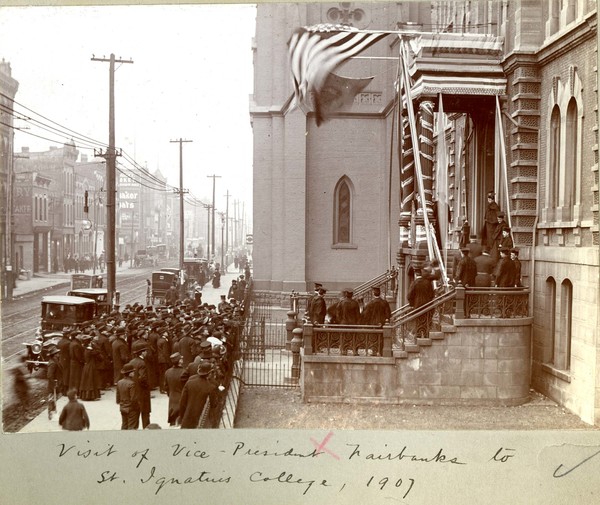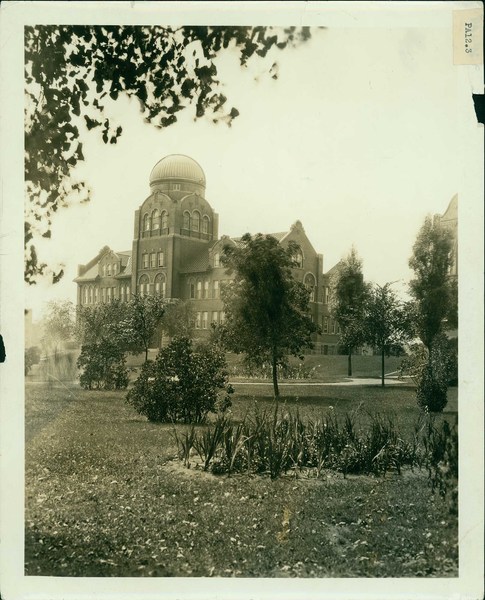Years of Development: 1895-1920
During this period the College of Arts and Sciences was expanded, and the physical expansion of the college continued.
The Rev. Francis B. Cassilly, S.J., a vice president during the tenure of Father Dumbach, had a flair for skillful management and human relations. No small detail of college routine escaped his attention. In fact, shortly after the Spanish-American war, Father Cassilly had the words of the Star-Spangled Banner translated into Spanish so that it could be sung in that language at the 1901 commencement exercises. This was his way of symbolizing the peace made between the two nations. He also encouraged an interest in Celtic history and literature so that at one time there were 25 students enrolled in these courses, which did not remain very long in the curriculum.
The publication, Collegian, began in 1901, and later was renamed the Loyola Quarterly.
In 1906, Loyola bought 25 acres at Devon Avenue and Sheridan Road in the Rogers Park section of Chicago, overlooking Lake Michigan. This marked the beginning of the Lake Shore Campus.
It was not too long before the school was entering students in the Rhodes scholarship examinations for admission to Oxford University, England. This highly prized scholarship examination began in the U.S. in 1902, and since that period 32 Rhodes scholarships have been allocated annually to America. In 1906, one Loyola student took the test and passed; the following year two out of three Loyola men who took the examination were accepted at Oxford, and in 1908 five of the six who wrote the Rhodes scholarship examination passed.
In 1907, Vice President of the U.S. Charles W. Fairbanks visited Loyola and was awarded ian honorary degree. Speaking on the importance of human values, Vice President Fairbanks remarked:
"The performance of our institutions does not rest alone upon law, does not rest alone on the virtue of our constitution and of our statutes, no matter how wisely they may have been formed or how well they may be expressed. This permancence must rest upon the honesty, upon the education and upon the morality of the great body of our countrymen."
The "growing up" period was marked by the construction of Cudahy Science Hall at Lake Shore; the establishment of the Loyola University Press, and the first Senior Prom in 1911 with more than 150 couples attending the event.
One of the most generous friends of the university was the Cudahy family. It all began when Michael Cudahy, a well-known Chicago businessman, told Father Burrowes of his desire to aid the couse of private education. The building which he promised became a reality in 1912 when Cudahy Science Hall was dedicated by his son, Joseph, in memory of his father who died in 1910.
The Loyola University Alumnae Association was founded in 1915; its first officers were Celia M. Gilmore, president; Margaret Madden, vice-president; Kate Mead, secretary; F. Frances Quinn, treasurer, and Ella R. Connell, delegate.
A total of 1,030 Loyola men served in World War I and 24 lost their lives. It was at this same period that the Loyola News was established, and just in time to carry one of its first major news stories, the signing of the Armistice on November 11, 1918.
It was during 1918 that Summer School was established at the university. This step laid the foundation for a program that would eventually become an integral part of Loyola's academic program.
A year after the end of the Great War, Loyola was host to a distinguished visitor, Cardinal Mercier of Belgium. The Cardinal, who was awarded a LL.D. by Loyola, said: "I shall always recall these days as being a happy symbol of the bond of mutual affection and admiration which unites the Belgian and American people."
In 1920, Loyola marked 50 years of educational leadership; it was becoming an outstanding institution of higher learning serving the city of Chicago.


